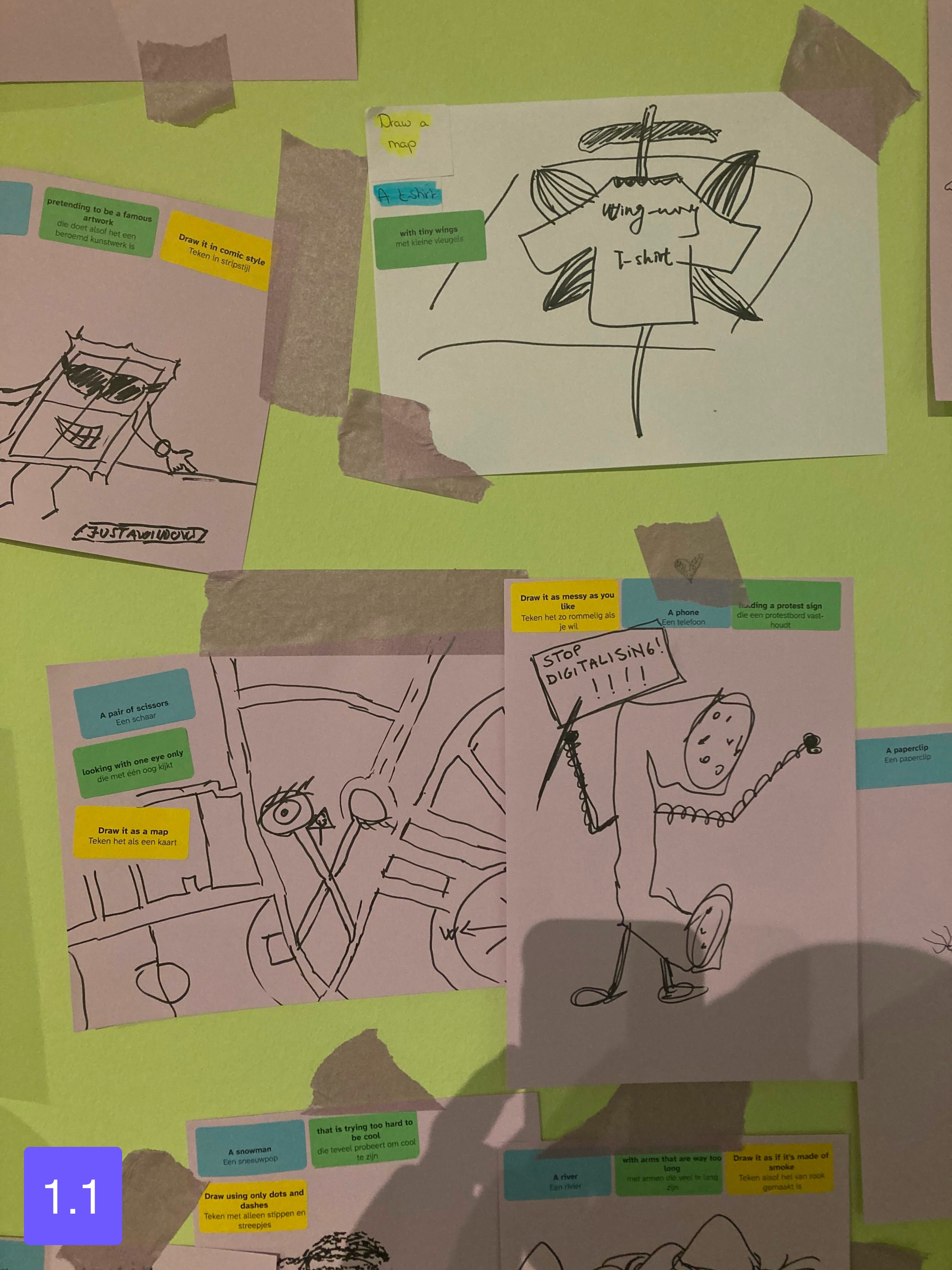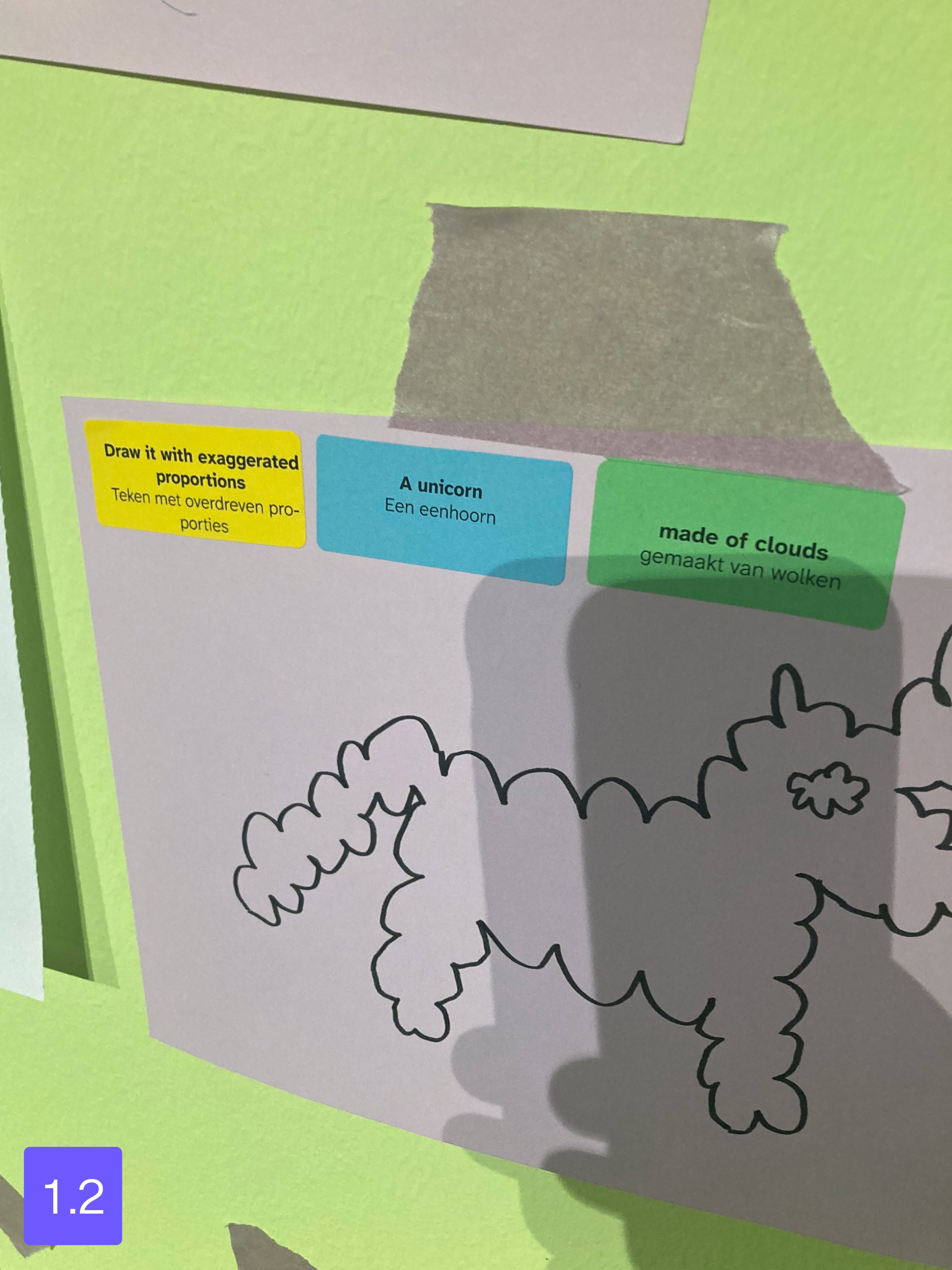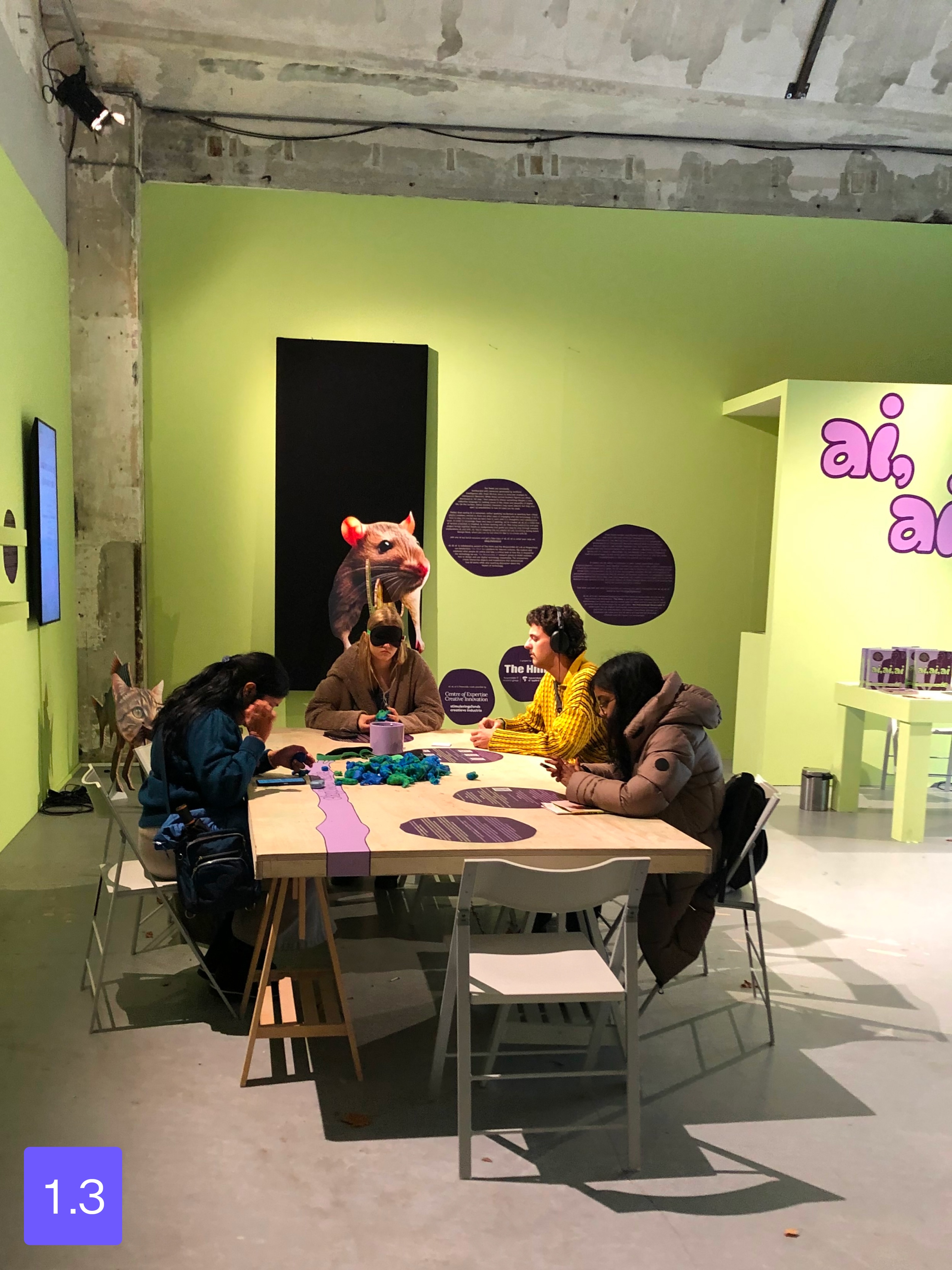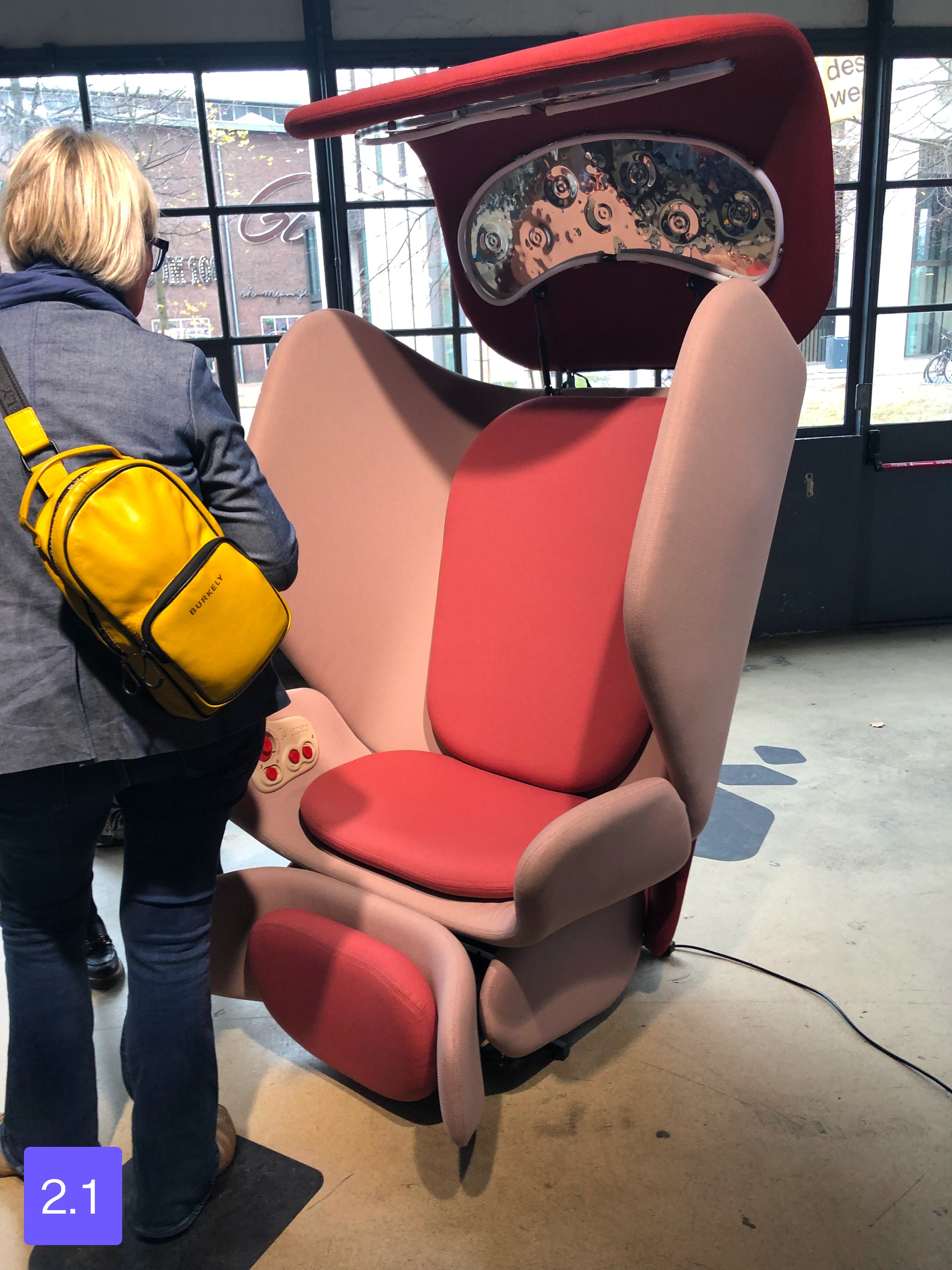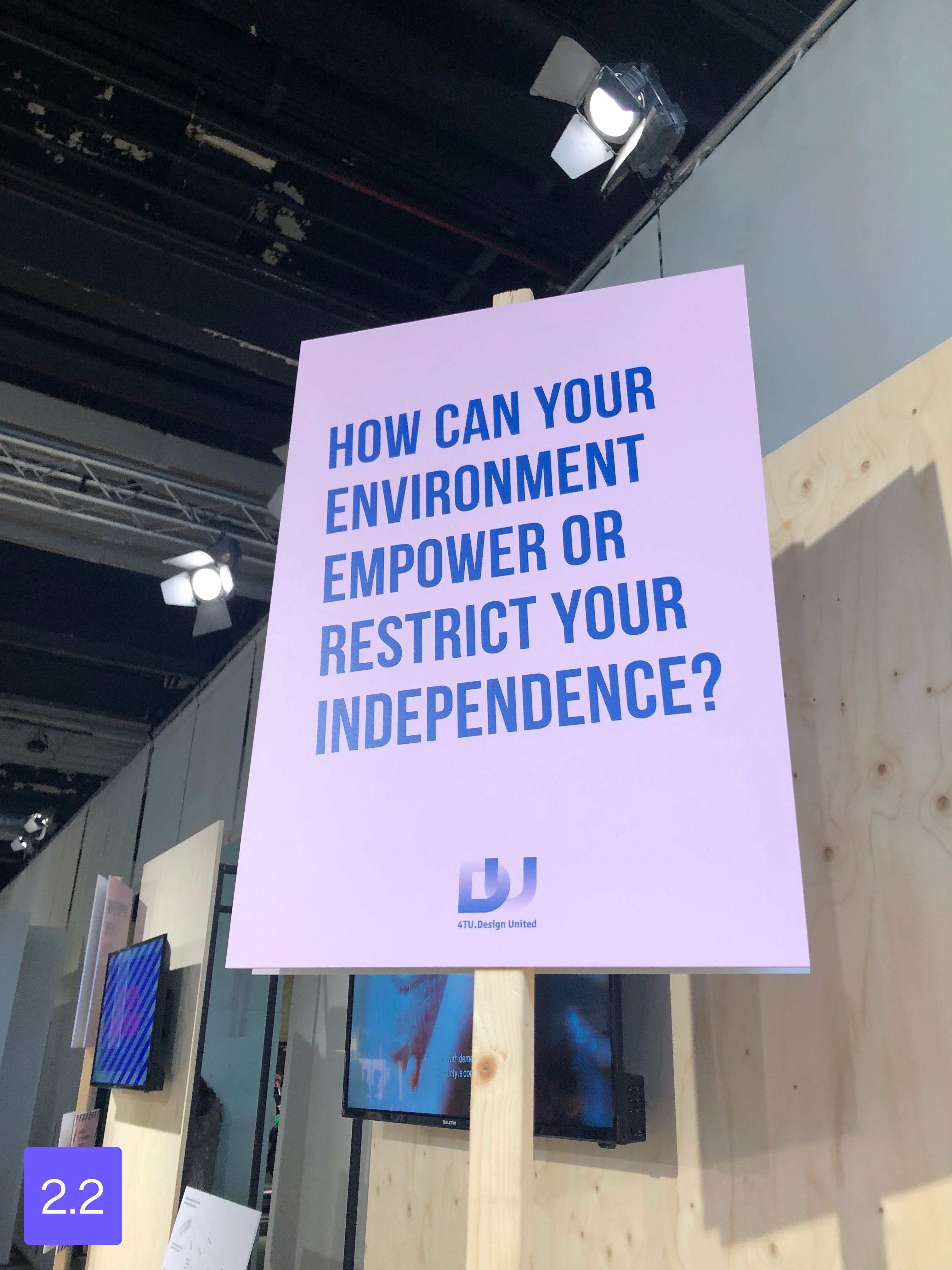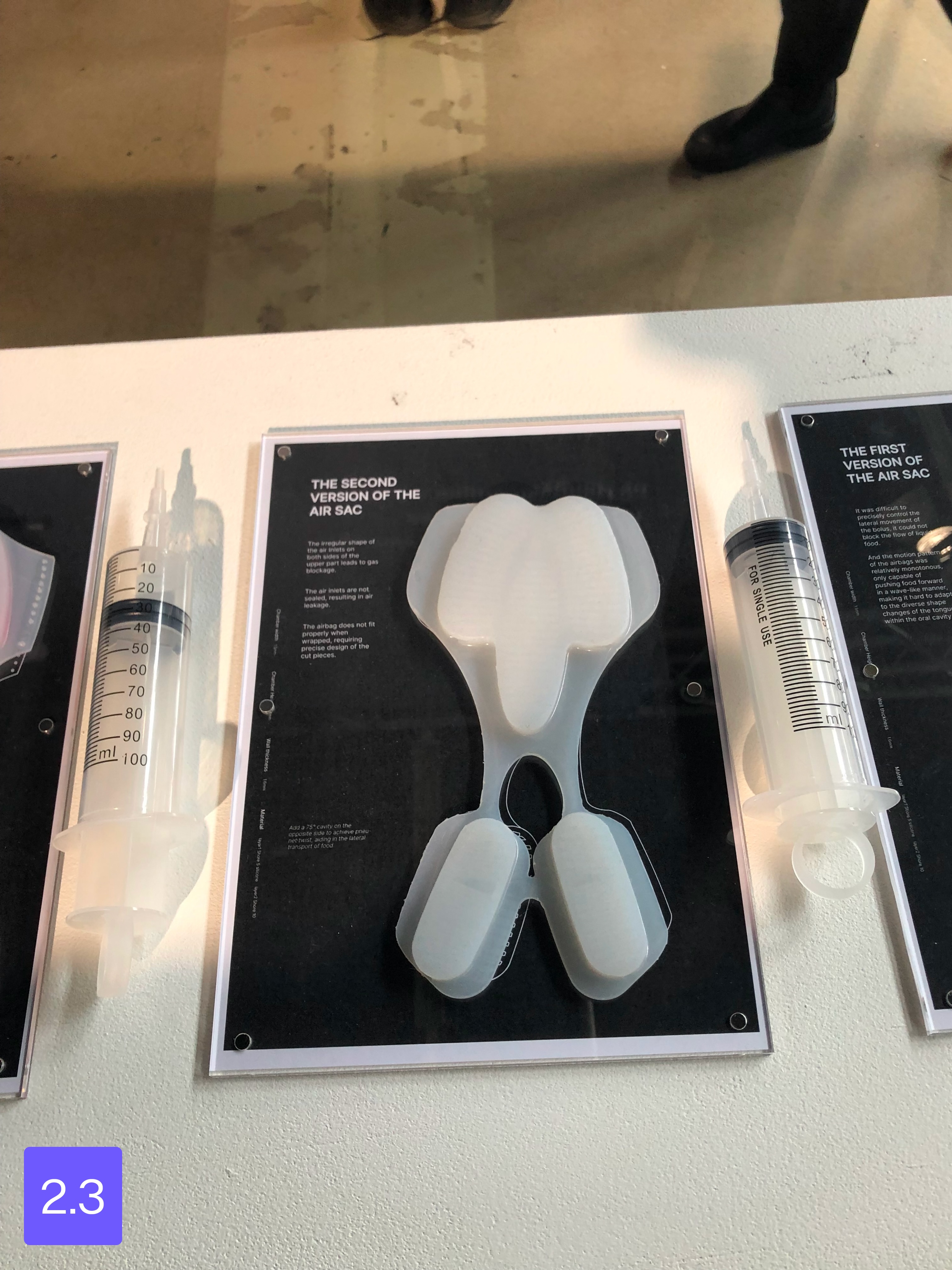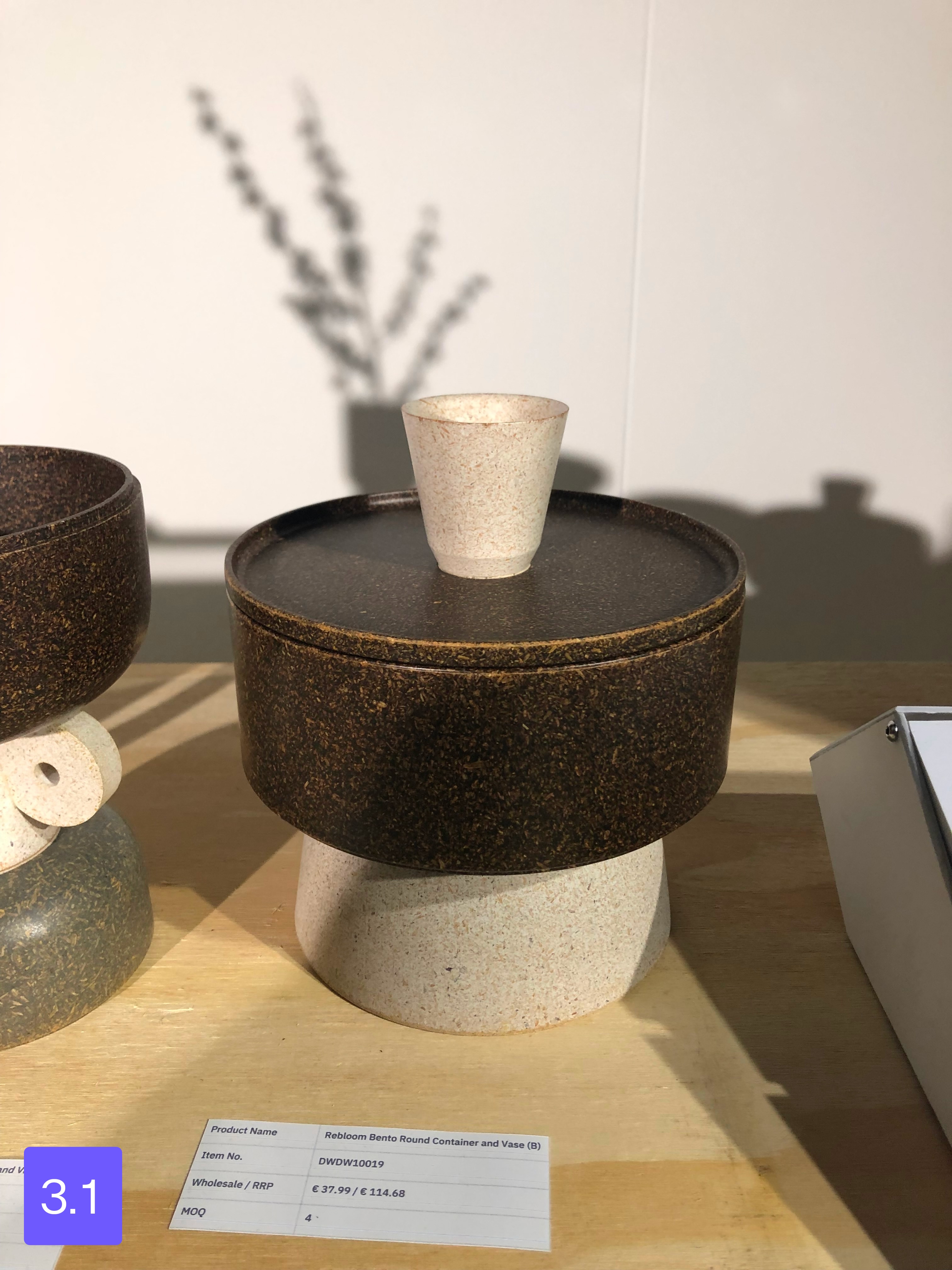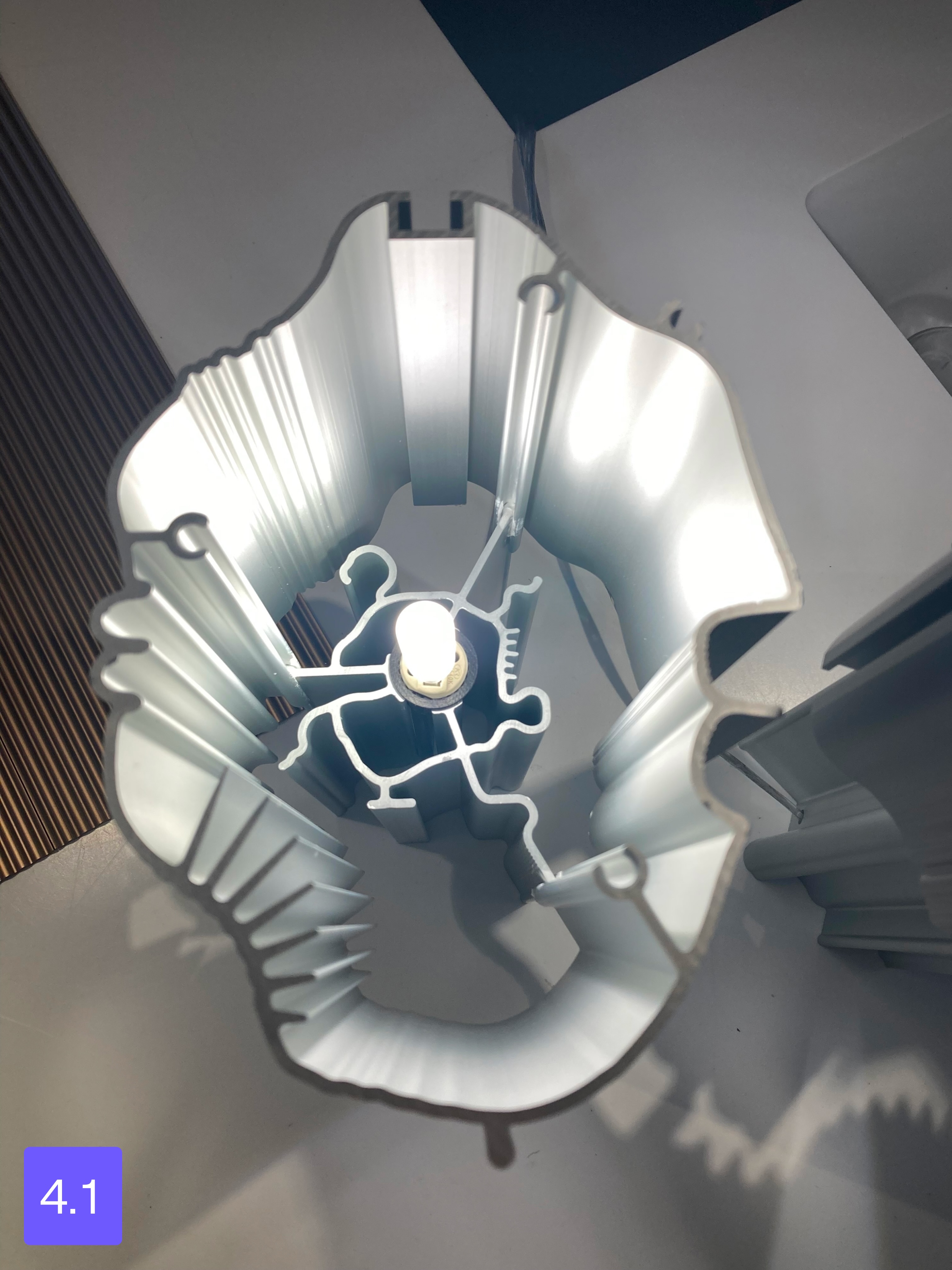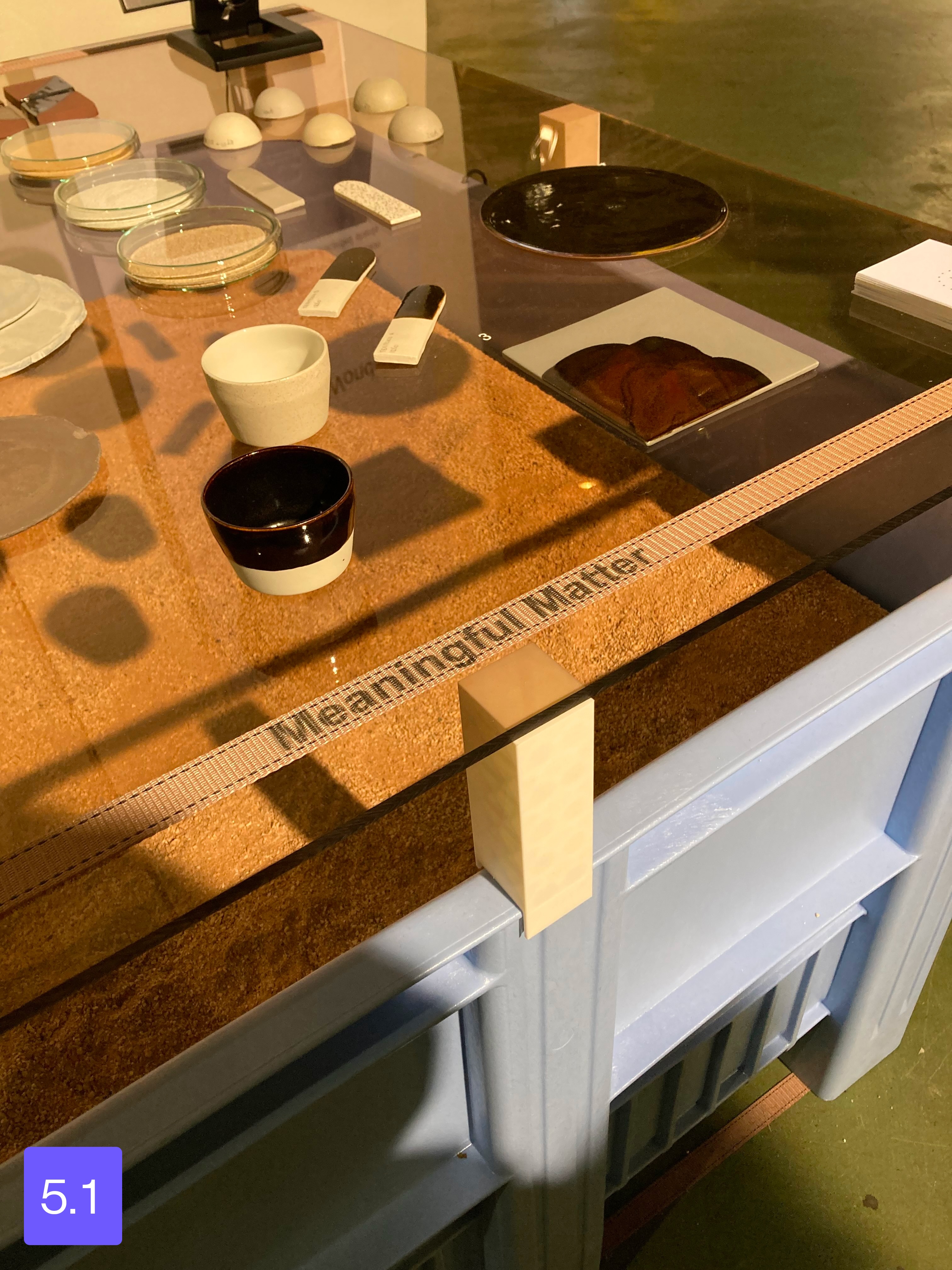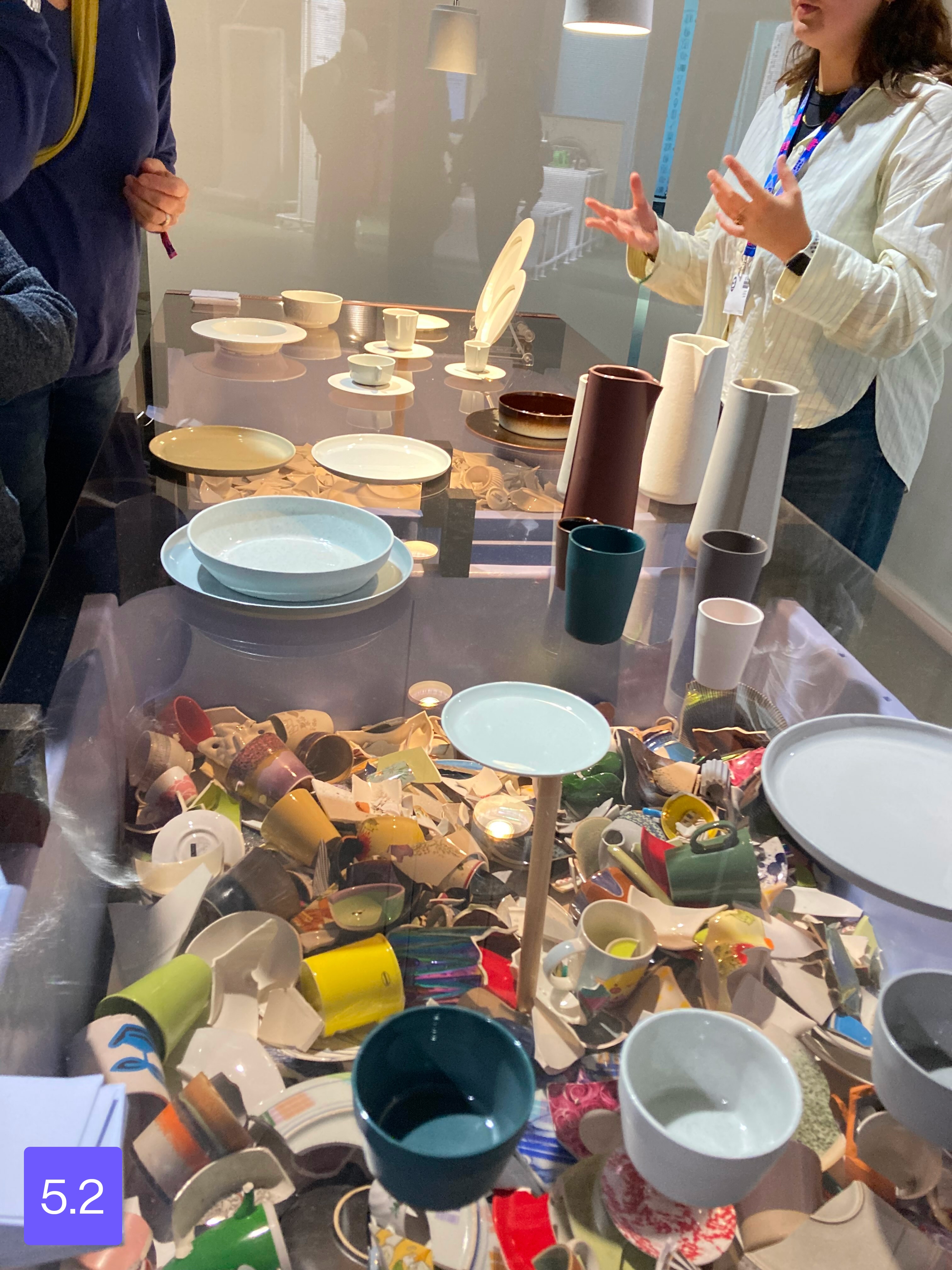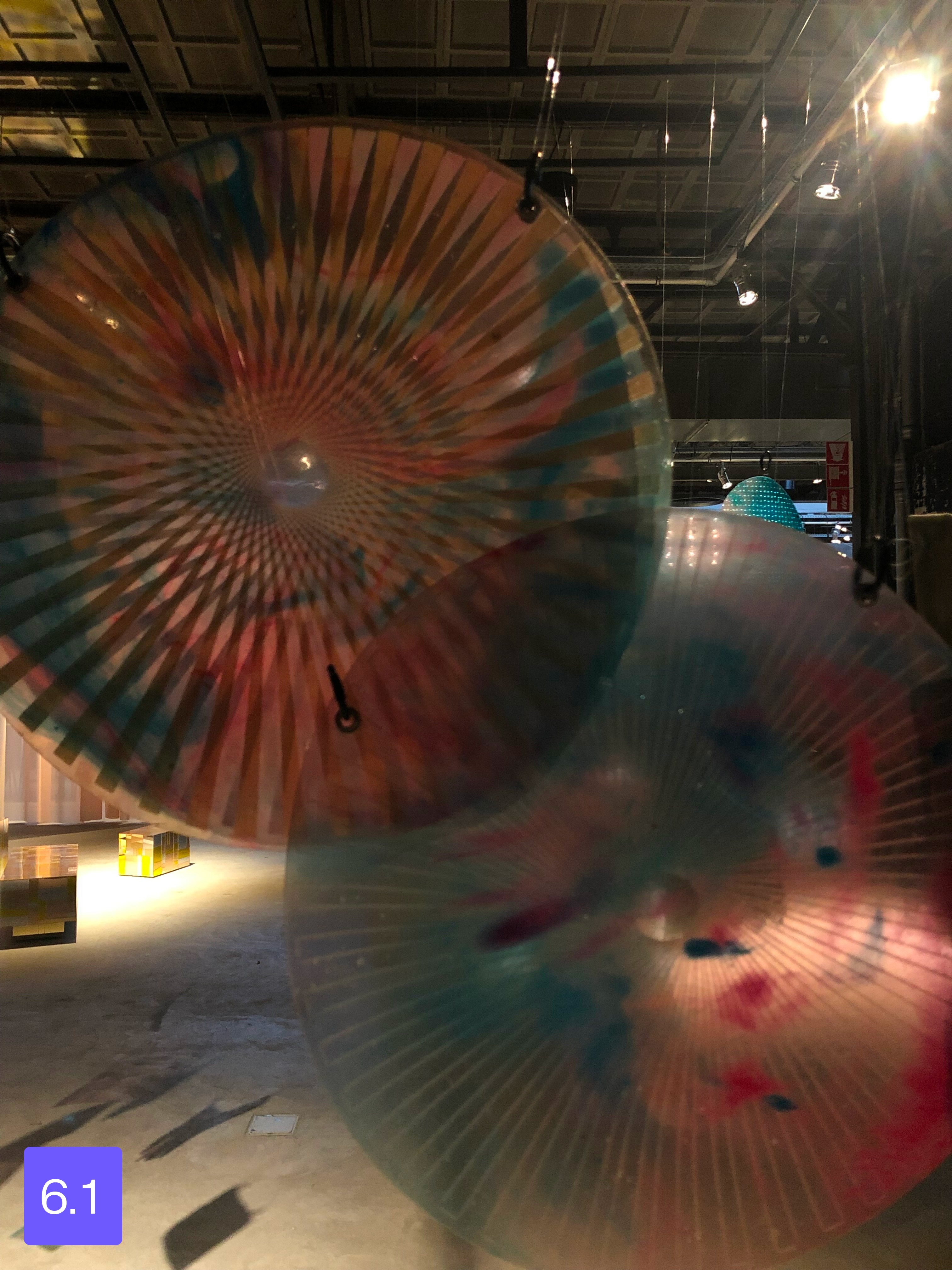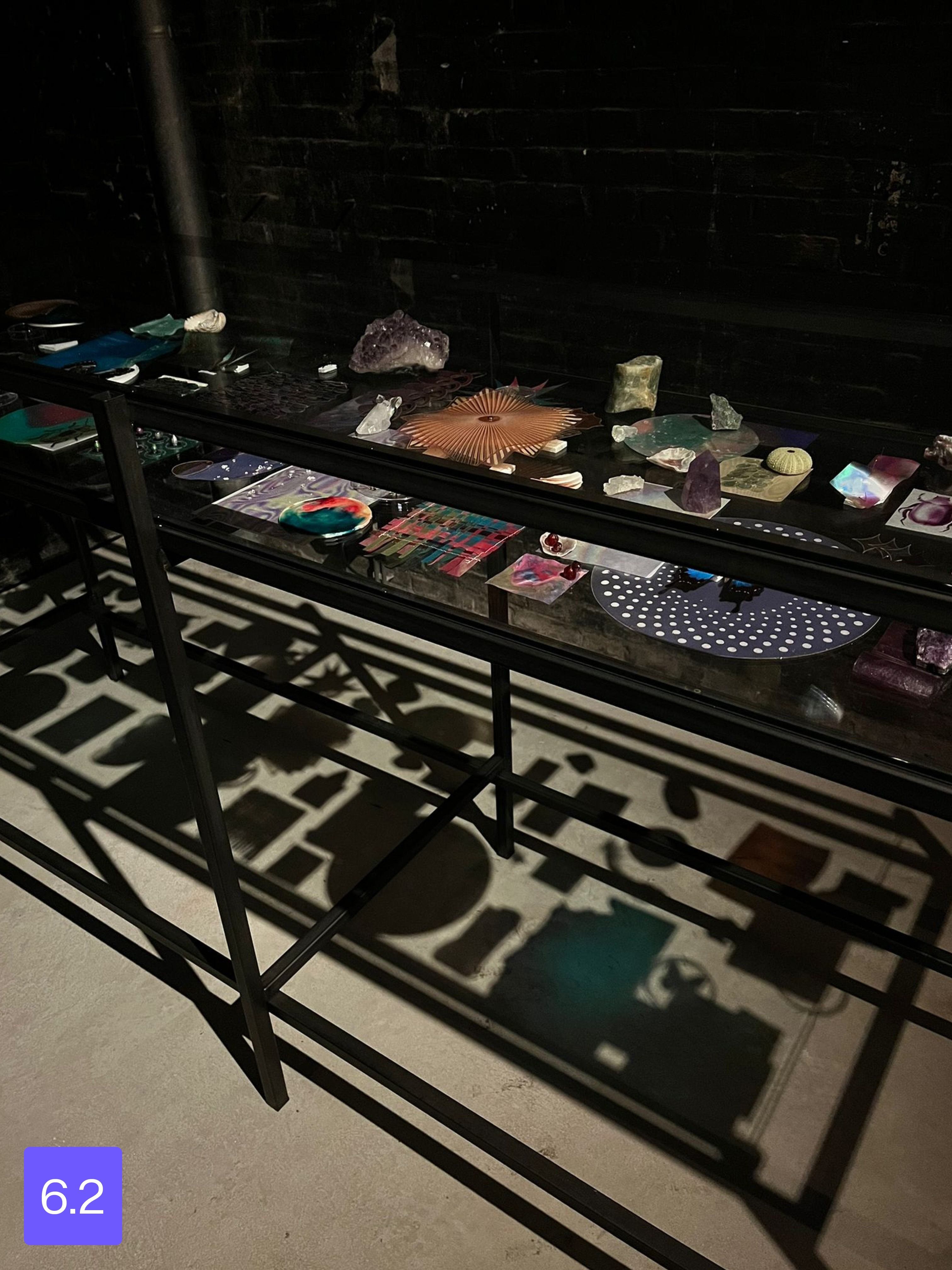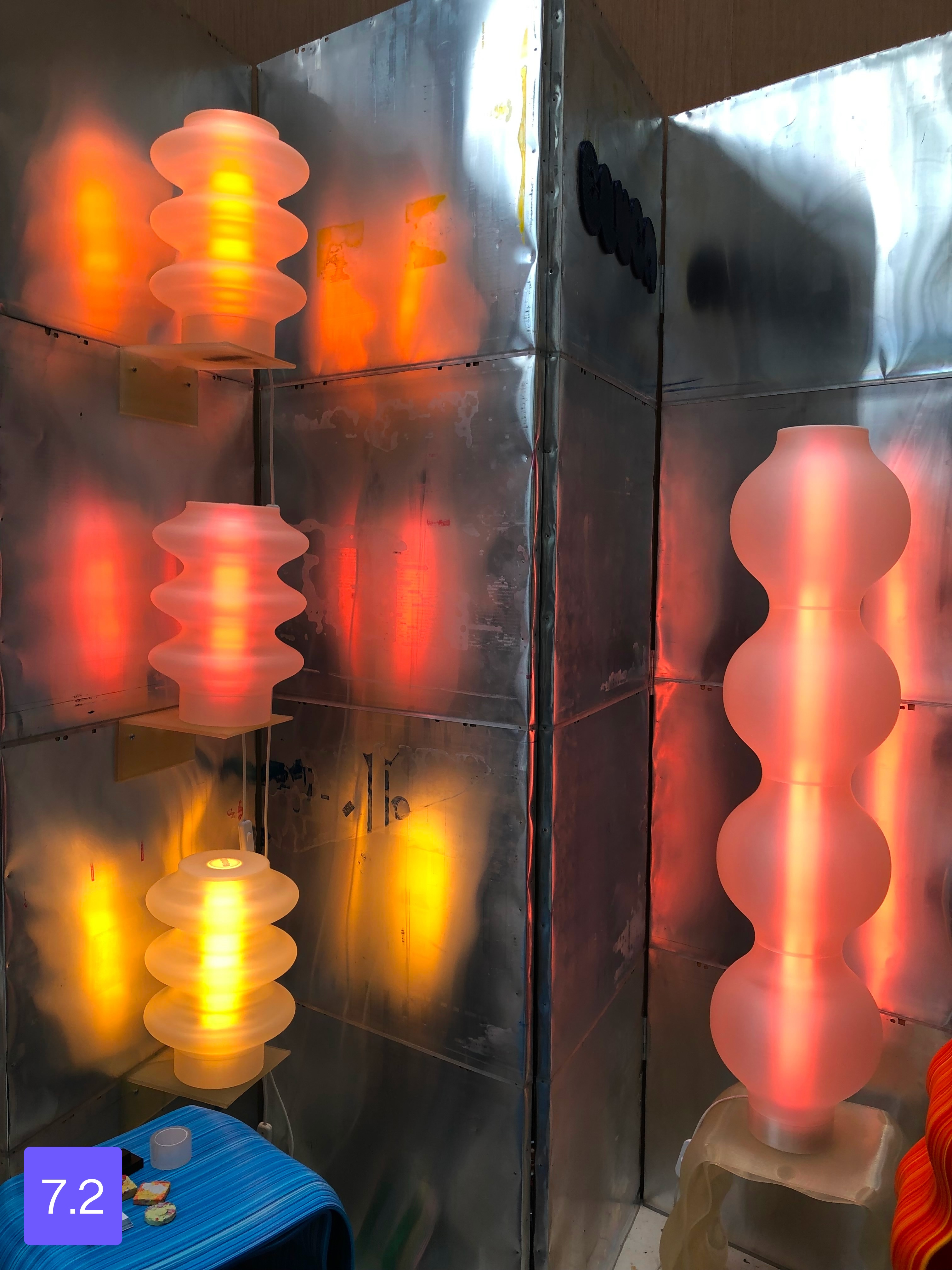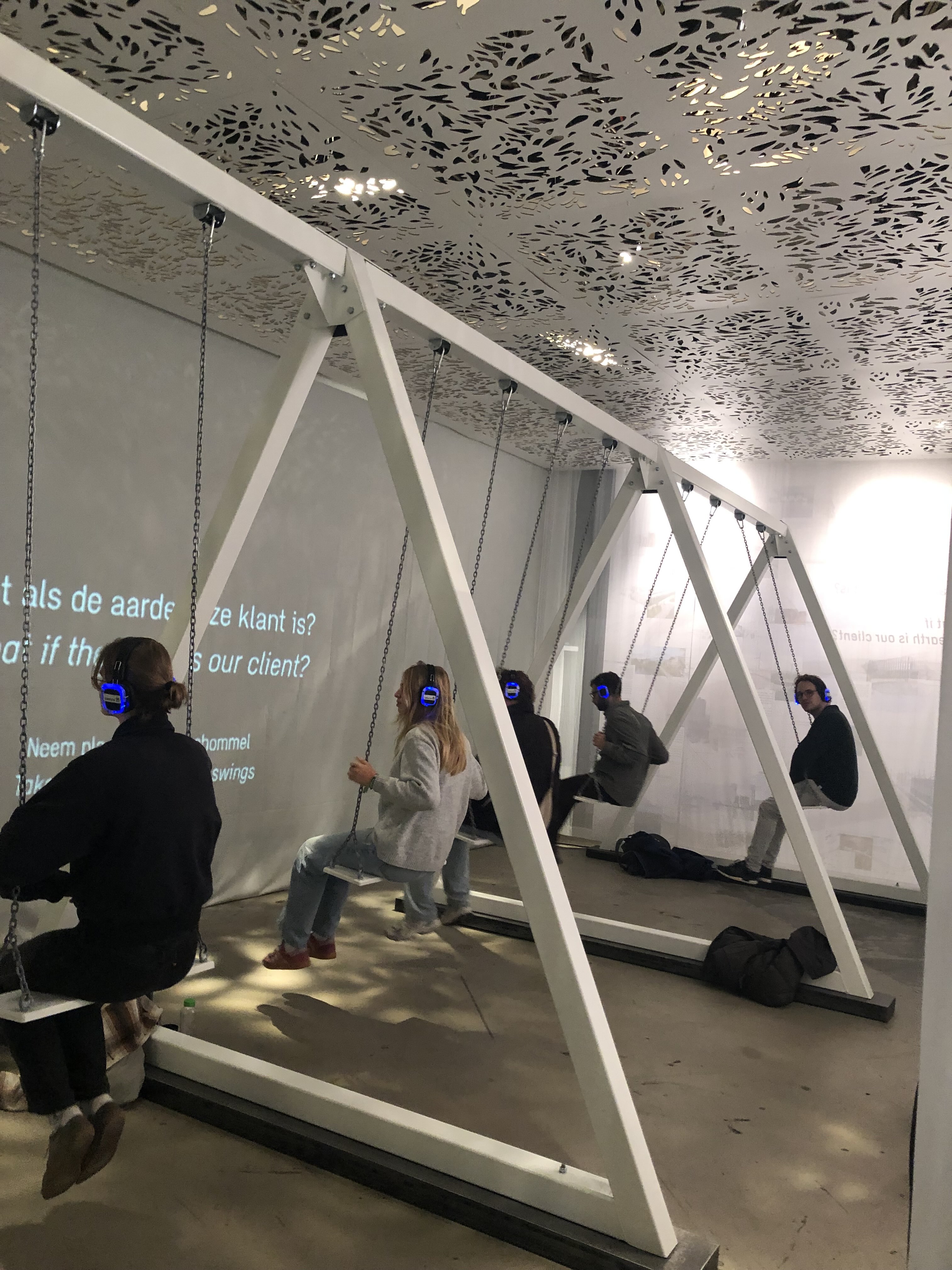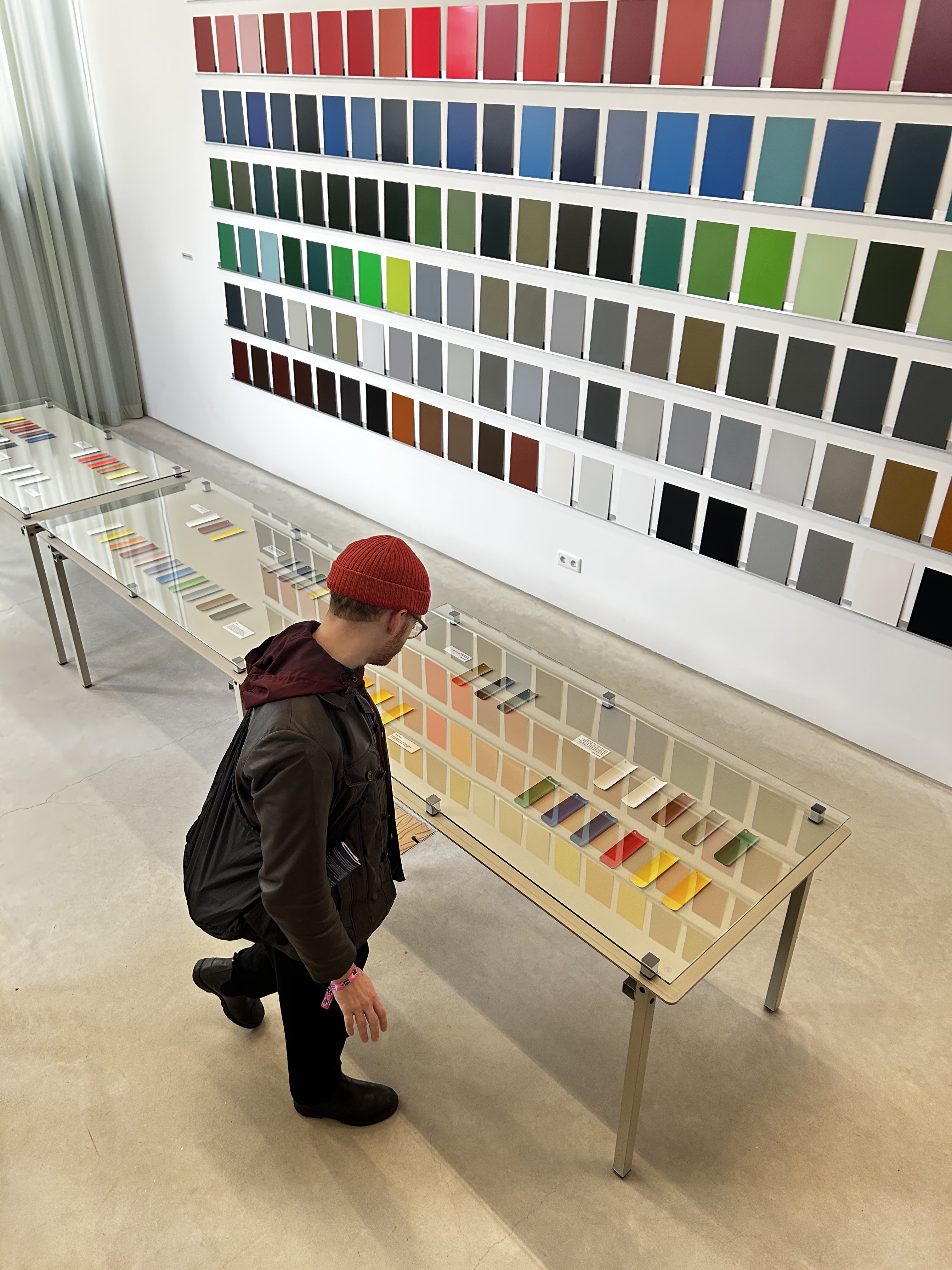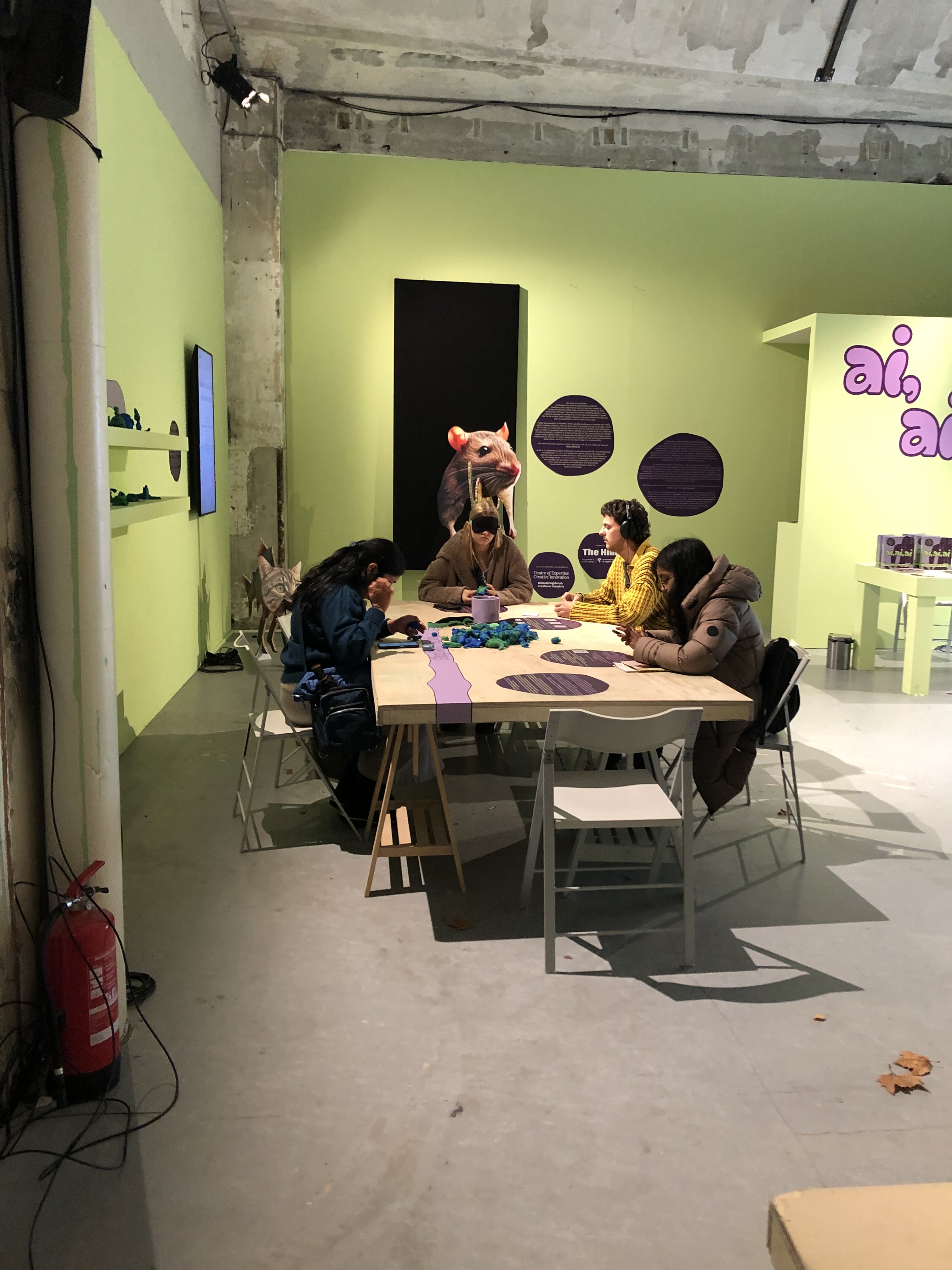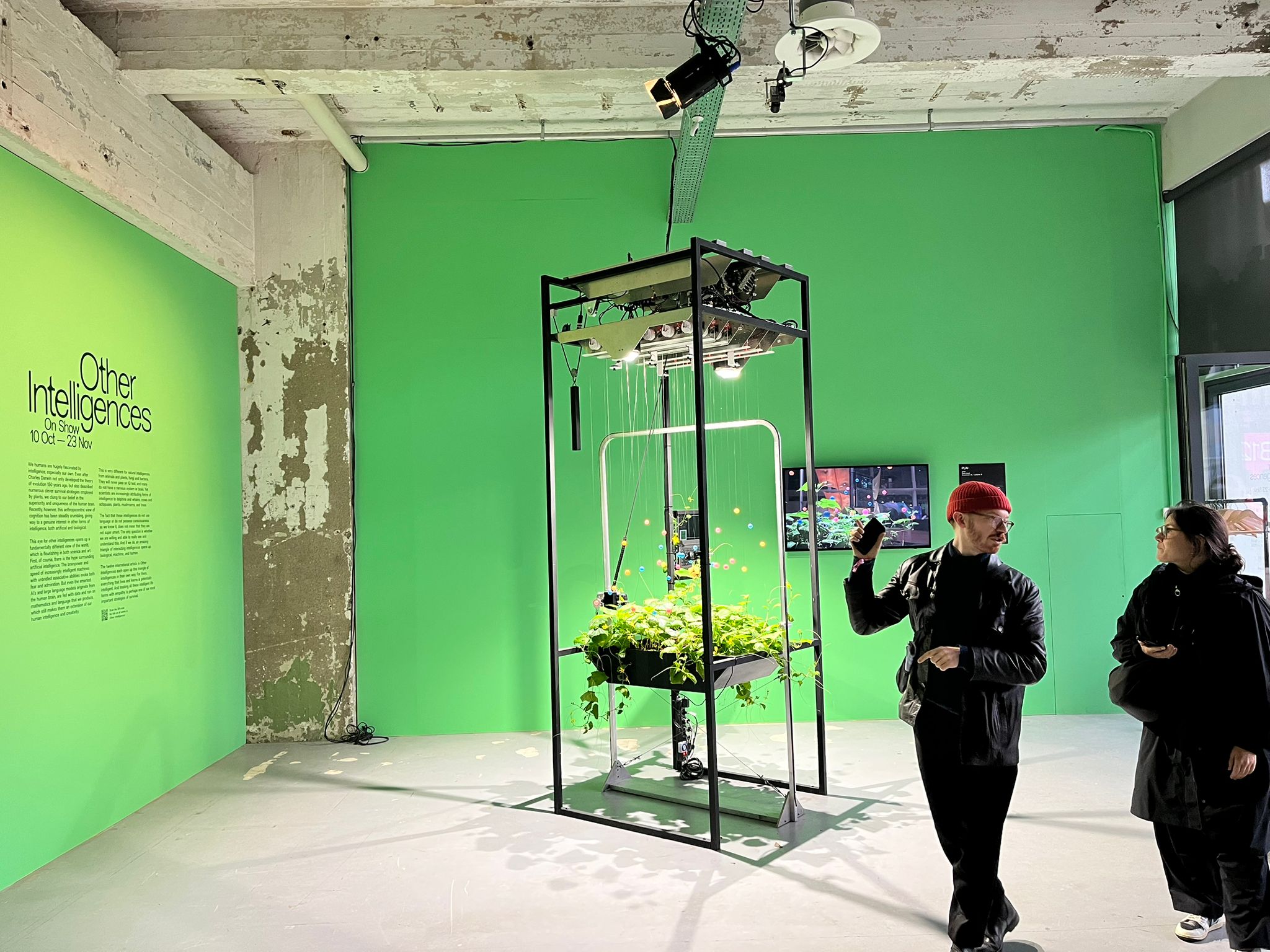
Dutch Design Week is one of Europe’s biggest celebrations of creative innovation: nine days (so not really a week, but who are we to quibble) of exhibitions, talks, and design experiments that take over the southern city of Eindhoven every October.
It’s not about polished products or glossy launches; it’s where ideas are tested, materials are reimagined, and the future of design starts to take shape. From student concepts to global studios, the whole city turns into a living sketchbook. For anyone who cares both about where design’s currently at and where it’s headed next, it’s the place to be.
Some of HATTER’s design team headed there last week. Here, Senior 3D Experience Designer Cat Warmaan and Designer Zelda Colombo reveal their top moments – be it a specific design, a moment, a space, or a learning – and explain why it made such an impression. (Corresponding images can be found in the slider below.)
Design team’s collective experiential highlight
(1) Ai, Ai, Ai by Strijp-S
Visitors were invited to explore AI through a series of low-tech, hands-on workshops. One highlight was the prompt jars activity, where participants were prompted to draw something based on a randomly selected subject, context, and challenge. The results were pieces like unicorns made of clouds drawn with exaggerated proportions.
In another workshop, visitors wore blindfolds and sculpted with clay while listening to a narrated story through their headphones, shaping what they heard into tactile forms.
Both workshops filled the space with hand-made creations that reimagined what a participatory installation can offer.
Senior 3D Experience Designer Catherine Warmann’s highlights
(2) Design as a tool for change to improve quality of life by 4TU Design United
A series of projects focusing on social and human-centric design, this exhibit – sitting at the intersection of design and scientific research – was a thought-provoking moment in the midst of playful explorative design pieces.
It encouraged designers to stop and consider your own impact with the work you make, pushing designers to adapt their thinking to create work that is truly accessible for all.
(3) “DEsign from Waste of Agriculture and Industry” by DEWA & DEWI
A number of projects showcased the transformation of waste material –primarily agricultural and industrial residues – into design objects, to provoke “…audiences to see ‘waste’ not as an end, but a meaningful return.”
I liked the thought and consideration behind this – using a by-product from industry to create usable and aesthetic products. Not a new idea, but the design and quality of the products, which looked less like by-products of recycled material than beautiful objects in their own right, stood out to me.
The presentation was nice, showcasing first the raw materials (offcuts and residue), sketches, and then the finished product –highlighting how beauty can come from unexpected places.
(4) “From scrap to design objects within a 100 kilometre radius" by Hydro R100
A collection of design pieces – furniture, lighting, waste bins, etc. – made from locally sourced aluminium scrap, decommissioned light poles, and greenhouse remnants. Every stage, from collecting and casting to machining and anodizing, takes place within 100km in the Benelux region, cutting transport-related emissions – a major but often ignored factor in sustainable production.
I really loved this project. It not only takes a clear environmental approach but also transforms materials that usually go unnoticed – industrial components from, say, architecture and transport sectors, such as aluminium extrusions – into something beautiful and premium.
Many of the objects showcased some original features of the original extrusions, adding an unexpected twist to the finished product.
Designer Zelda Colombo's highlights
(5) The "Storytelling" display by Meaningful Matter
This display, part of the “Fragments of Wonder” exhibit, concerned presentation as the object’s narrative.
Designing high-end objects crafted from fragments of locally sourced ceramic waste, the displays tell the story of the products by showing their different states, i.e. fragments -> powder -> finished product.
It’s a very efficient way to tell the story visually. Simplicity is key. And I liked the nice branded detailing.
(6) “Translating physical bioplastics into tactile digital experiences” by Materia Futura
Creating iridescent, translucent materials using gelatine and bioresin, the project aims to explore the future of sustainable materials through the fusion of nature, technology, and craft.
It responds to a key tension in biodesign: the gap between the vibrant, immersive aesthetics of digital culture and the often-muted look of biomaterials.
I also liked the way they showcased the samples: an archive-type binder where you could touch and feel each sample and objects on glass, which, in turn created shadows on the floor.
(7) A blend of technology and circularity by Bluba Studio
This project uses 3D-printing technology to create lamps and furniture from biodegradable filaments such as PLA (a biopolymer made from corn starch).
The seating stands out for its colour-layering technique: pigment is added during printing, producing unique colour effects each time.
Lamps are modular so can be rearranged. If a part breaks, only that element needs replacing, not the whole lamp. “Bluba encourages customers to return broken lampshades, which can be melted down and reused to make new lamps.” It’s smart, reducing waste and extending product life.
I especially liked the effect of the colour, materiality, and light – particularly the beautiful light against the metal display.




